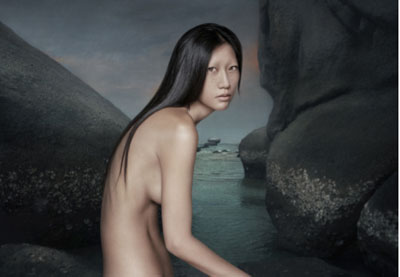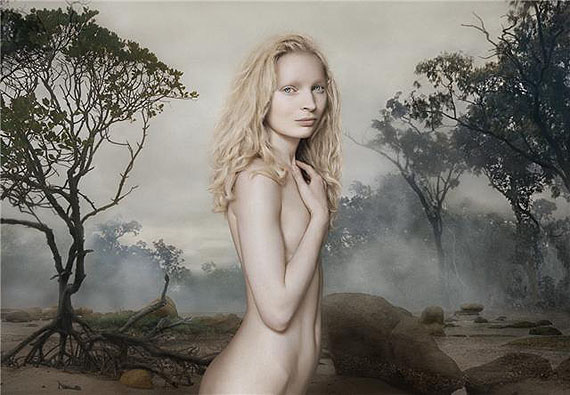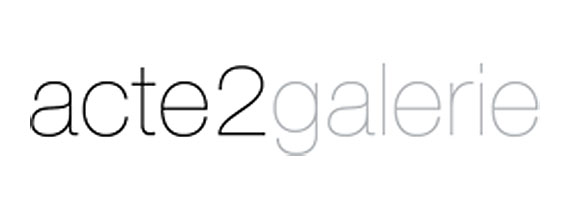
Vee Speers »
Show off Paris
Pascal Bernier
Fair: 21 Oct – 24 Oct 2010
Wed 20 Oct

For its fifth édition, SHOW OFF 2010 becomes the SOLO SHOW art fair of Paris. SHOW OFF will take place October 21-24, 2010 during Paris’s Contemporary art week and will be set in a luminous, élégant tent in the heart of Paris, a few steps away from the Grand Palais and the banks of the Champs Elysees. Painting, photography, drawing, sculpture, vidéo, and installation ; all media will be presented en a unique format highly favorable to participating artists. « Amidst the overwhelming profusion of autumn art fairs in the heart of this outpouring of art which sometimes remindsus of what it’s outpouring of art which sometimes reminds us of what it’s like to stroll through a busy bazar, I look forward to the breath of fresh air that SHOW OFF promises, because art is no guaranteed luxury. The challenge of the One Man Show i s a bold one ! » Jérôme Ladiray, Ladiray gallery. Galerie ACTE 2: BIO VEE SPEERS Vee Speers was born in Australia and has been living in Paris since 1990. Her portraits have been exhibited and published world-wide. Her first book « Bordello » with a forward by Karl Lagerfeld, constructs elaborated filmic interiors of fantasy inspired by the lavish Parisian bordellos of the 1920’s. Speers’s most récent work « The Birthday Party » is a series of short stories linked by the thème of an imaginary birthday party. In a conceptual and technical departure from her previous work, it is partly a self portrait, sometimes woven with threads from her own childhood. Her last work IMMORTAL is presented for the first time at acte2galerie for Show Off. MICHAEL DWECK BOOKSIGNING / on Wednesday October 20th / from 7 PM to midnight Michael Dweck’s first major photographic work was published in volume form as The End: Montauk, N.Y., in 2004, and was featured in several exhibitions and art fairs that year. The work portrays the old fishing community of Montauk and its surfing subculture. It is an evocation of a real-world paradise lost: the paradise of summer, youth, and erotic possibility, and of community and camaraderie in a perfect setting. Blending nostalgia, fantasy, and documentation the photographs present a compelling portrait of a place in time and a way of life at once fading and being reinvented. In his follow-up to that success, in 2008, Dweck returned with his new project Mermaids. The exhibition and accompanying volume feature a dazzling array of photographs in which the photographer explores the theme of the female nude submerged in water. The simple sexy elegance and allure of these images is breathtaking. As Christopher Sweet writes in his introduction to the book: “Whether diving in the blue refractions of a swimming pool or suspended like a seraph in the cool, pellucid depths of a spring or emerging tentatively onto a rocky shore, Michael Dweck’s mermaids are lovely and aloof and bare of all raiment but for their beautiful manes and the elemental draperies that surround them. Water, light, and lens converge to capture in modern guise the elusive creature of myth.” The exhibition and accompanying book celebrate the modern mermaid, as represented by beautiful young women who appear very much at home in the water. Some of Dweck’s subjects come from Aripeka, an island fishing village on the gulf coast of Florida, and have spent much of their lives in and around the water and are capable of holding their breaths underwater for as long as five to six minutes. Photographed in Montauk and Amagansett, but mostly in the vicinity of the Weeki Wachee River in Florida, Dweck’s new work, while often abstracting the female body in a painterly swirl of watery refractions, celebrates the physical charm of the female form and the transformational effect that is achieved by the shedding of clothes and psychic baggage in the meditative isolation of the underwater world. In Dweck’s first body of work, he drew inspiration from his teenage years spent by the beach on Long Island and captured the vanishing surf culture of Montauk. The mermaids project also has its origins in Dweck’s years on Long Island where he often went night fishing along the south shore and off Montauk. Out on the water on moonlit nights he was intrigued by the shadowy shapes of fish passing swiftly by just under the surface, and he imagined those fleeting forms to be beautiful women—the ancient allure of the mermaid. Michael Dweck was born in Brooklyn, raised on Long Island, and studied fine arts at the Pratt Institute. From there, Dweck began his career in advertising in which he went on to become a highly regarded Creative Director receiving over 40 international awards, including the coveted Gold Lion at the Cannes International Festival in France. Two of his long-form television pieces are part of the permanent film collection of The Museum of Modern Art in New York. Having taken up photography at an early age and used photography throughout his career, he left advertising to focus on photography full time. Dweck’s compelling images have appeared in numerous publications throughout the world, including Vanity Fair, French Vogue, and Esquire. His photographs were first showcased at Sotheby’s, New York, in 2003, in their first solo exhibition for a living photographer, and have been exhibited extensively throughout the world, including solo exhibitions at the Staley-Wise Gallery in New York, Maruani & Noirhomme in Belgium, the Robert Morat Galerie in Hamburg and the Blitz Gallery in Tokyo. His work is also shown at the Fahey/Klein Gallery in Los Angeles and the Eric Franck Fine Art in London. His current exhibitions will feature the work from Mermaids and will tour galleries throughout the United States, Europe, and Asia. Michael Dweck lives in New York City. BIO PASCAL BERNIER This disenchanted world which has lost the innocence of its 'paradise' is what Pascal Bernier now depicts for us as a vast laboratory of violence, where he cynically admits he works "without anaesthetic". Pascal Bernier's fatal toys Fairy stories are definitely a thing of the past. If once upon a time there was an age when humanity could still believe in the profoundly miraculous nature of the world, it was because it was still untouched by these techno-sciences which since the modern age have enabled cruelty to expand systematically. As the witnesses and sometimes victims of this dehumanisation process, artists have on several occasions given us extremely scathing illustrations of this increasingly mechanical evolution. The science-fiction of the early 20th century with a film like Metropolis, or the "futurist" glass globe scenario, or closer to home, Warhol's Electric Chair as early as the 1960s anticipates the shock of an encounter with "Forbidden America". This disenchanted world which has lost the innocence of its "paradise" is what P. Bernier now depicts for us as a vast laboratory of violence, where he cynically admits he works "without anaesthetic". Also, instead of chloroformed regrets, the artist prefers to cut into the quick of the subject and with desperate energy take on a battle which enables him to confront as a tragic-comic hero the increasingly "cheap" morbidity of his time. In order to answer this both aesthetic and ethical emergency, several works focus on objects such as children's toys, which have difficulty in coming to terms with the loss of the "perfect world" to which they were attached. From this point of view, the Hunting accidents and Farm Sets series form one of the most exemplary statements on this fallen nature, where Bambis are now game and "Animal Farm" -to borrow Orwell's title- is a concentration camp universe. As repetitive as the oil slicks, animal tortures and ethnic genocides of our daily realities, these images of blindfolded animals or furry toys and "virtual landscapes" thus follow on from one another in the stream of works like a disaster that can not be stemmed. For in this artist's work, there is also a keen awareness of the irreversibility oftime which certain philosopher scientists have identified through the description of physical systems referred to as "unstable". Translated in terms of fractal geometry and statisticallaws, this paradoxical vision of programmed chaos as an end in itself -probably the amplification of an original instability- gives the work its utterly nightmarish dimension. From this point of view, the "butterfly effect" which was the principal tool in the popularisation of chaos theories is not unrelated to these pieces entitled WWF, for which Bernier grafted fighter plane roundels onto the wings of several species of insects, as a sign -who knows?- of some new kind of future micro-biological war. Just like model aircraft boxes, these little transfers also refer to a childhood world whose playful activities are not as innocent as they may on first sight appear. On the toy shelves of our supermarkets, the arms' race is in full swing, even if morality is draped in the Heroic Fantasies costumes of Spider Man or Super Man. Along the same lines, we can also cite such series as cooked Battlefield or Beach Guns, which make use of the apparently contrad ictory telescoping tech n iq ue albeit against the cruelly true background of leisure activities and war: the former by frying up little lead soldiers, the second by making sand castles in the shape of revolvers. Denis Gielen
